Introduction: Exploring the Top 10 Must-Visit Places in Paris
In this guide, we’ll take you on a virtual tour of the top 10 must-visit places in Paris, each offering a unique glimpse into the city’s rich tapestry of art, architecture, and gastronomy. From the iconic Eiffel Tower to the quaint streets of Montmartre, these destinations promise to leave an indelible mark on your heart and soul.
So, grab your beret and let’s delve into the magic of Paris as we uncover its hidden gems and celebrated treasures that await your exploration. Get ready to fall in love with Paris all over again, one enchanting landmark at a time.
Iconic Landmarks in Paris
1. Eiffel Tower
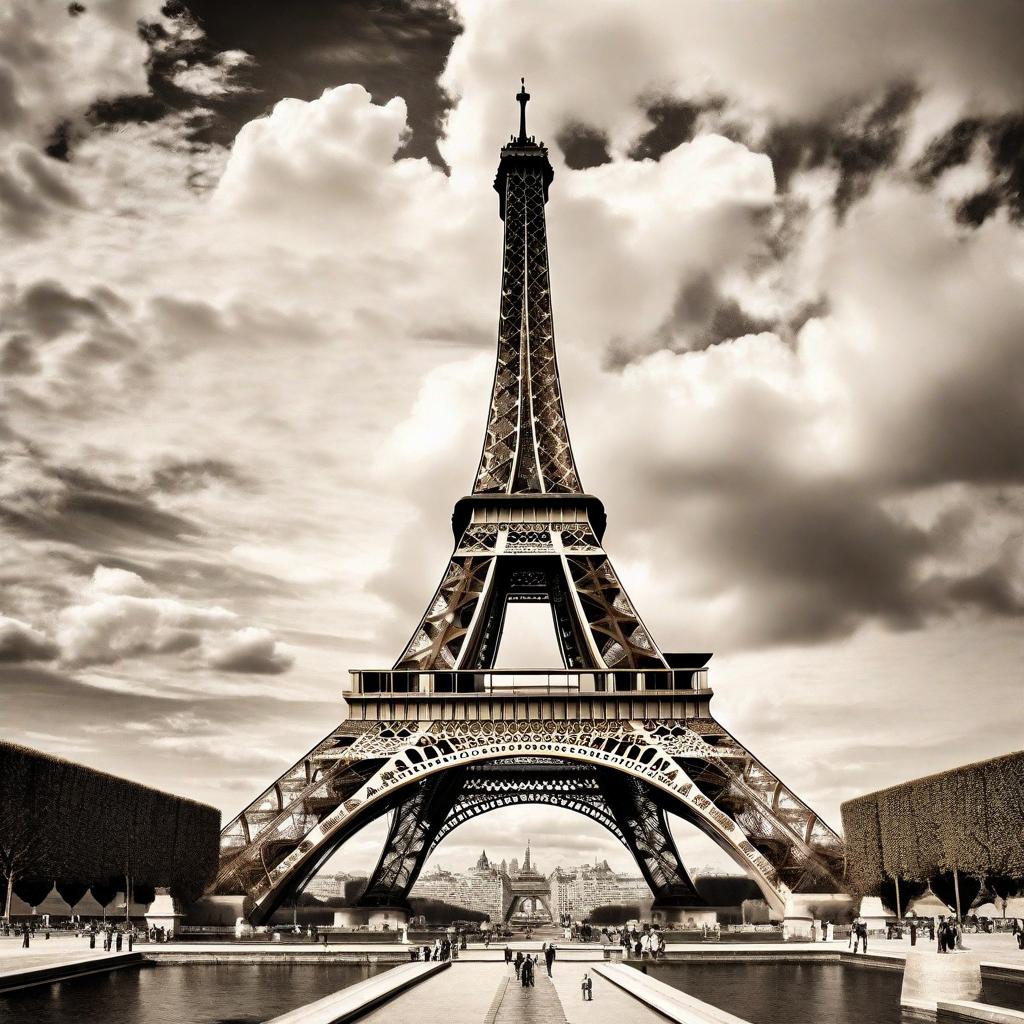
1. History and Significance: The Eiffel Tower stands as an iconic symbol of Paris and is recognized worldwide. Built by Gustave Eiffel for the 1889 Exposition Universelle (World’s Fair) to celebrate the 100th anniversary of the French Revolution, its original purpose was to serve as a temporary exhibit. However, its unique design, which was groundbreaking at the time, garnered immense popularity and acclaim. Today, it remains a testament to human ingenuity and engineering prowess, attracting millions of visitors each year.
2. Best Viewpoints and Photo Ops: For breathtaking views of Paris and unforgettable photo opportunities, there are several key viewpoints around the Eiffel Tower. The Trocadéro Gardens, across the Seine River, offer a panoramic vista of the tower framed by fountains and gardens, perfect for capturing the monument in its entirety. Additionally, ascending the tower itself provides unparalleled views of the cityscape, with observation decks on multiple levels offering different perspectives. Sunset and evening hours are particularly magical, as the tower is illuminated, casting a golden glow over the city.
3. Nearby Attractions and Activities: The Eiffel Tower is surrounded by a wealth of attractions and activities to explore. Just across the Seine lies the Champ de Mars, a vast green space ideal for picnics or leisurely strolls with views of the tower in the background. Nearby, the Musée du Quai Branly showcases indigenous art and cultures from around the world. For those interested in history and military artifacts, the Musée de l’Armée, located in the nearby Les Invalides complex, is a must-visit. Additionally, the bustling neighborhood of Saint-Germain-des-Prés, with its charming cafes, boutiques, and historic landmarks, is within walking distance, providing ample opportunities for shopping, dining, and exploration.
Exploring the Eiffel Tower and its surroundings offers visitors a chance to delve into both the historical significance of this architectural marvel and the vibrant culture of Paris itself. Whether admiring the tower from afar, ascending to its dizzying heights, or immersing oneself in the attractions nearby, a visit to the Eiffel Tower promises an unforgettable experience in the City of Light.
2. Louvre Museum
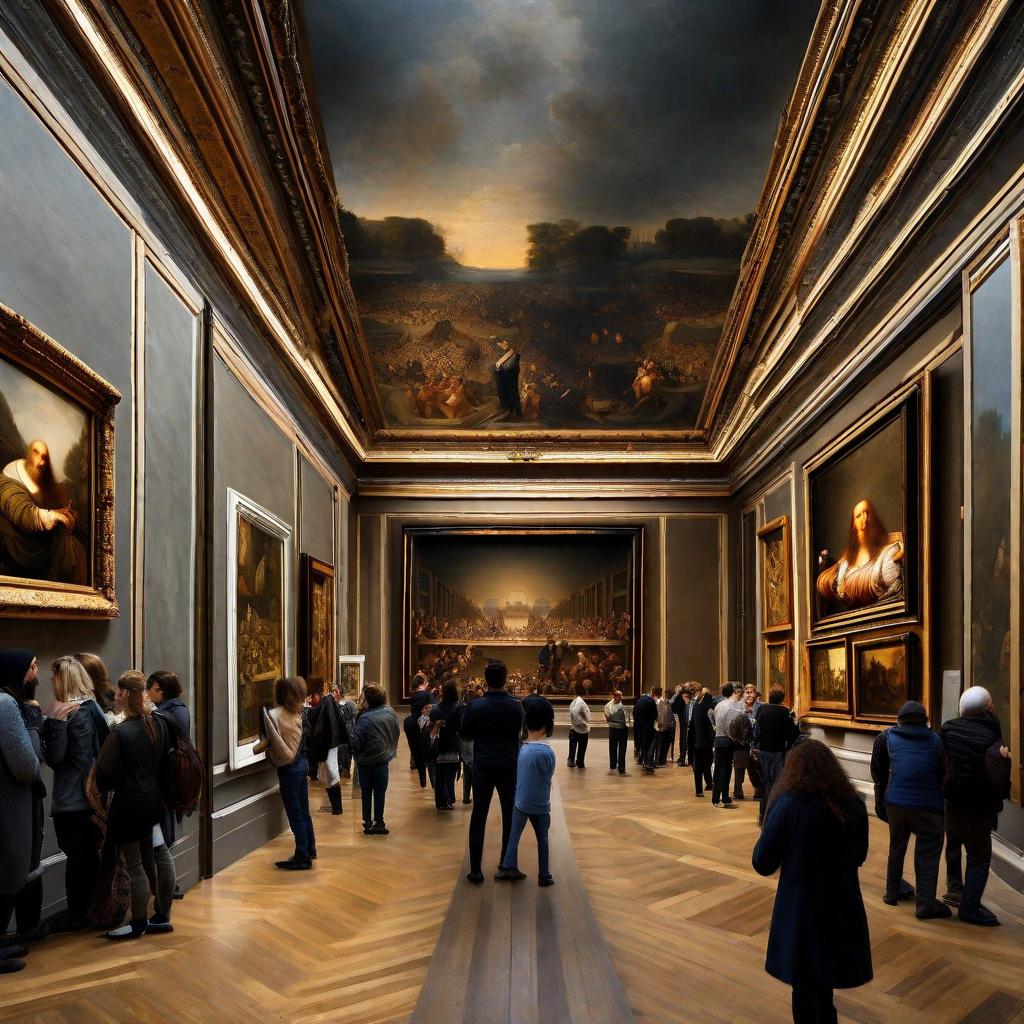
Famous Artworks and Collections:
- Mona Lisa: Undoubtedly the most famous artwork in the Louvre, Leonardo da Vinci’s masterpiece attracts large crowds daily. Make sure to see it, but be prepared for crowds.
- Venus de Milo: This ancient Greek statue of Aphrodite is another highlight of the museum’s collection, known for its graceful beauty.
- Winged Victory of Samothrace: This stunning Hellenistic sculpture of Nike, the goddess of victory, is displayed at the top of the Daru staircase and never fails to impress.
- Code of Hammurabi: Dating back to around 1754 BC, this ancient Babylonian law code is one of the oldest surviving legal texts in the world.
- The Wedding Feast at Cana: Painted by Veronese, this enormous masterpiece depicts the biblical story of the transformation of water into wine.
Tips for Avoiding Crowds:
- Visit Early or Late: The Louvre is less crowded in the early morning or late afternoon. Consider visiting when it first opens or closer to closing time.
- Avoid Peak Times: Try to avoid visiting on weekends or during peak tourist seasons, such as summer and holidays.
- Use Alternate Entrances: The main entrance at the pyramid tends to have long lines. Consider using the entrances at the Carrousel du Louvre shopping mall or the Porte des Lions to enter with shorter queues.
- Book Tickets in Advance: Purchase tickets online in advance to skip the ticket queues. Louvre tickets also allow you to use a separate entrance, saving time.
Hidden Gems Within the Museum:
- Napoleon III Apartments: Tucked away in the Richelieu wing, these lavishly decorated rooms offer a glimpse into the luxurious lifestyle of the French emperor.
- Medieval Louvre: Explore the medieval foundations of the Louvre in the Sully wing, where you can see remnants of the original fortress that once stood on the site.
- Egyptian Antiquities: While not exactly hidden, the extensive collection of Egyptian antiquities is often overlooked by visitors. Don’t miss the mummies, sarcophagi, and monumental statues in this section of the museum.
- Islamic Art: Another overlooked section, the Department of Islamic Art, features beautifully decorated ceramics, textiles, and architectural elements from the Islamic world.
- Apollo Gallery: Located in the Richelieu wing, this opulent gallery houses a stunning collection of French Crown Jewels, including the famous Regent Diamond.
3. Notre-Dame Cathedral
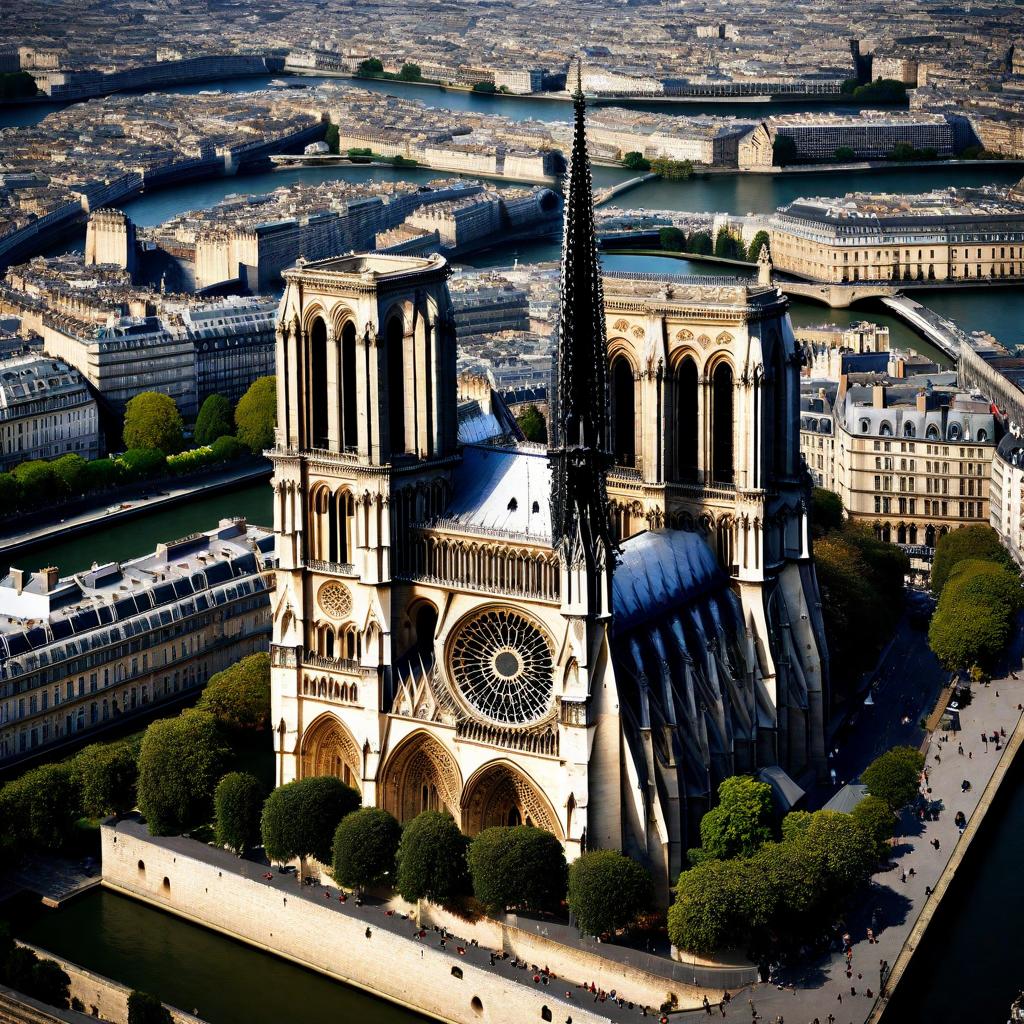
1. Architectural Features and History: Notre-Dame Cathedral, located on the Île de la Cité in Paris, is one of the most famous examples of French Gothic architecture. Construction began in 1163 during the reign of Louis VII and was largely completed in 1345, although modifications and additions continued over the centuries. The cathedral is renowned for its intricate façade adorned with sculptures and its iconic twin towers, which stand at around 69 meters (226 feet) tall.
Key architectural features include:
- Rose windows: Notre-Dame is famous for its three stunning rose windows, particularly the North Rose Window, which dates back to the 13th century.
- Flying buttresses: These arched supports, characteristic of Gothic architecture, help distribute the weight of the walls and roof, allowing for the construction of larger windows and taller structures.
- Spire: The cathedral’s original spire, added in the 13th century, was a prominent feature of the Paris skyline until it collapsed in the 2019 fire.
2. Restoration Efforts After the Fire: On April 15, 2019, a devastating fire broke out at Notre-Dame, causing significant damage to the cathedral’s roof and spire. While the stone structure largely survived, the wooden roof and spire were destroyed. Following the fire, an international fundraising campaign was launched to support the restoration efforts.
Restoration work has focused on stabilizing the structure, removing debris, and assessing the extent of the damage. Skilled craftsmen and architects are working diligently to rebuild the roof and spire using traditional techniques and materials, aiming to restore the cathedral to its former glory.
3. Religious Significance and Cultural Impact: Notre-Dame has deep religious significance as the seat of the Archbishop of Paris and a symbol of Catholicism in France. It has played a central role in the country’s history, hosting numerous royal weddings, coronations, and state events over the centuries.
Beyond its religious significance, Notre-Dame is a cultural icon that has inspired countless works of art, literature, and music. It has featured prominently in films, novels, and paintings, capturing the imagination of people around the world.
Charming Neighborhoods to Explore
1. Montmartre

Bohemian Vibe and Artist History: Montmartre has long been associated with artists, writers, and bohemians seeking inspiration. It was home to famous figures such as Pablo Picasso, Vincent van Gogh, and Henri de Toulouse-Lautrec. The neighborhood’s winding streets, charming squares, and picturesque views have attracted creatives for centuries.
Sacré-Cœur Basilica: One of the most iconic landmarks in Paris, the Sacré-Cœur Basilica sits atop the hill of Montmartre, offering stunning panoramic views of the city. This Roman Catholic church is known for its distinctive white domes and Byzantine-inspired architecture. Visitors can climb the steps to the basilica for breathtaking vistas or explore the interior’s intricate mosaics and stained glass windows.
Cafés, Shops, and Street Performers: Montmartre’s streets are lined with cozy cafés, quirky boutiques, and bustling squares. Visitors can stroll along Rue des Abbesses or Rue Lepic to discover charming bistros, artisanal shops, and vintage stores. Meanwhile, Place du Tertre is known for its outdoor artists’ market, where talented painters and portraitists showcase their work. Street performers, from musicians to magicians, often entertain visitors around the neighborhood, adding to its lively atmosphere.
2. Le Marais
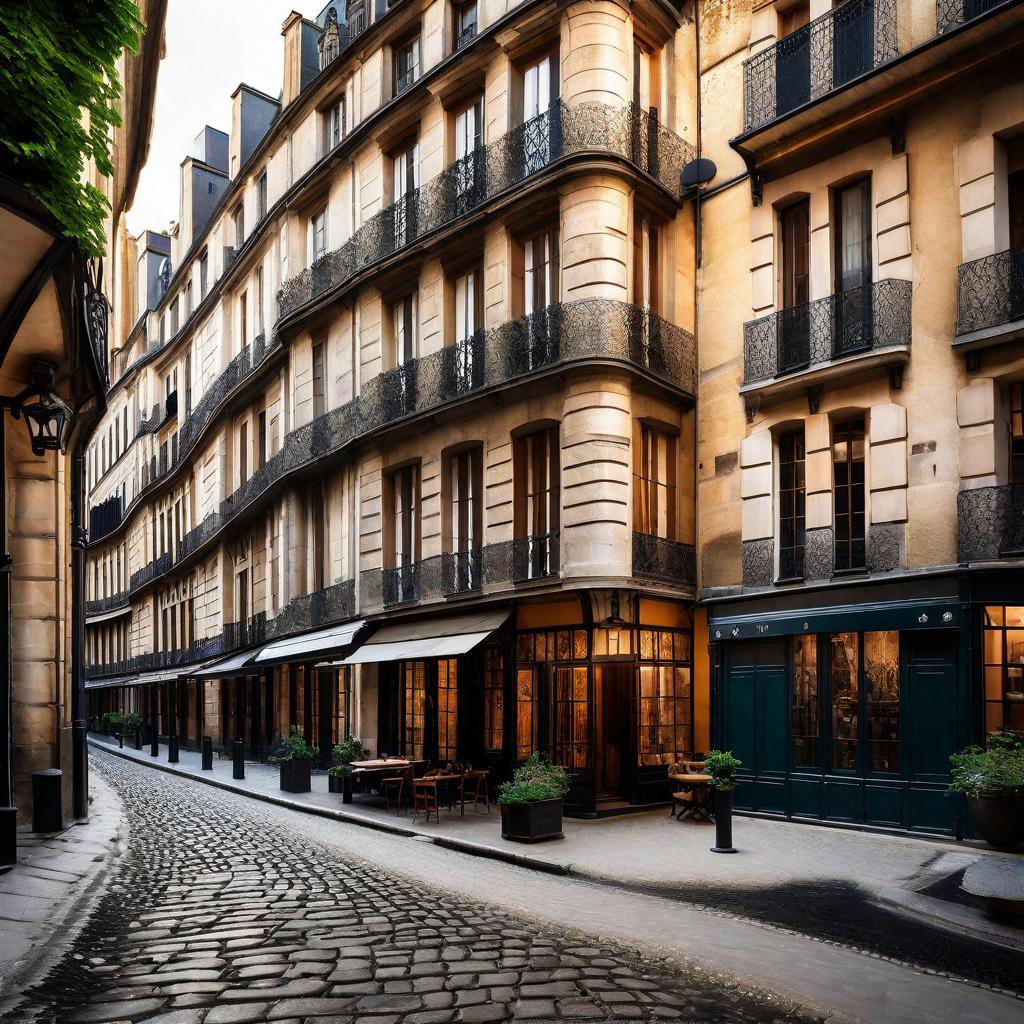
Historic architecture and Jewish heritage: Le Marais is renowned for its well-preserved medieval architecture, with narrow cobblestone streets and elegant mansions dating back to the 17th century. Additionally, it’s known for its Jewish heritage, with synagogues, kosher bakeries, and shops scattered throughout the neighborhood, especially around Rue des Rosiers.
Trendy boutiques and designer stores: Amidst the historic charm, Le Marais also boasts a vibrant contemporary scene, with trendy boutiques, concept stores, and designer labels lining its streets. Visitors can explore fashionable shops selling everything from clothing and accessories to home décor and art.
Place des Vosges and hidden courtyards: The Place des Vosges, a stunning square surrounded by elegant arcades and lined with manicured gardens, is a highlight of Le Marais. It’s a perfect spot for a leisurely stroll or a picnic. Additionally, the neighborhood is dotted with hidden courtyards, known as “cours,” tucked away behind unassuming doorways. These quiet oases offer a peaceful retreat from the bustling streets and are often adorned with charming gardens, fountains, and ivy-covered walls.
3. Saint-Germain-des-Prés

Literary History and Famous Cafés:
- Saint-Germain-des-Prés has long been associated with the literary and intellectual elite of Paris. Writers and philosophers like Jean-Paul Sartre, Simone de Beauvoir, and Albert Camus frequented the area’s famous cafes, such as Café de Flore and Les Deux Magots. You can soak in the atmosphere and perhaps even find inspiration while sipping coffee at these historic establishments.
Antique Shops and Art Galleries:
- The neighborhood is dotted with antique shops and art galleries, making it a haven for art enthusiasts and collectors. Wander through the cobblestone streets and discover hidden treasures in the various boutiques and galleries that showcase a wide range of art, from contemporary pieces to antique finds.
Jardin du Luxembourg and Upscale Dining Options:
- While technically just outside the borders of Saint-Germain-des-Prés, the Jardin du Luxembourg is a nearby attraction worth mentioning. This beautiful park offers a serene retreat with its manicured gardens, tree-lined pathways, and iconic Medici Fountain. It’s a perfect spot for a leisurely stroll or a relaxing afternoon picnic.
- In terms of dining, Saint-Germain-des-Prés boasts a plethora of upscale restaurants offering a diverse range of culinary experiences. From traditional French bistros serving classic dishes to Michelin-starred establishments pushing the boundaries of gastronomy, you’ll find no shortage of options to indulge your palate in this neighborhood.
Culinary Delights to Indulge In
1.Michelin-starred Restaurants
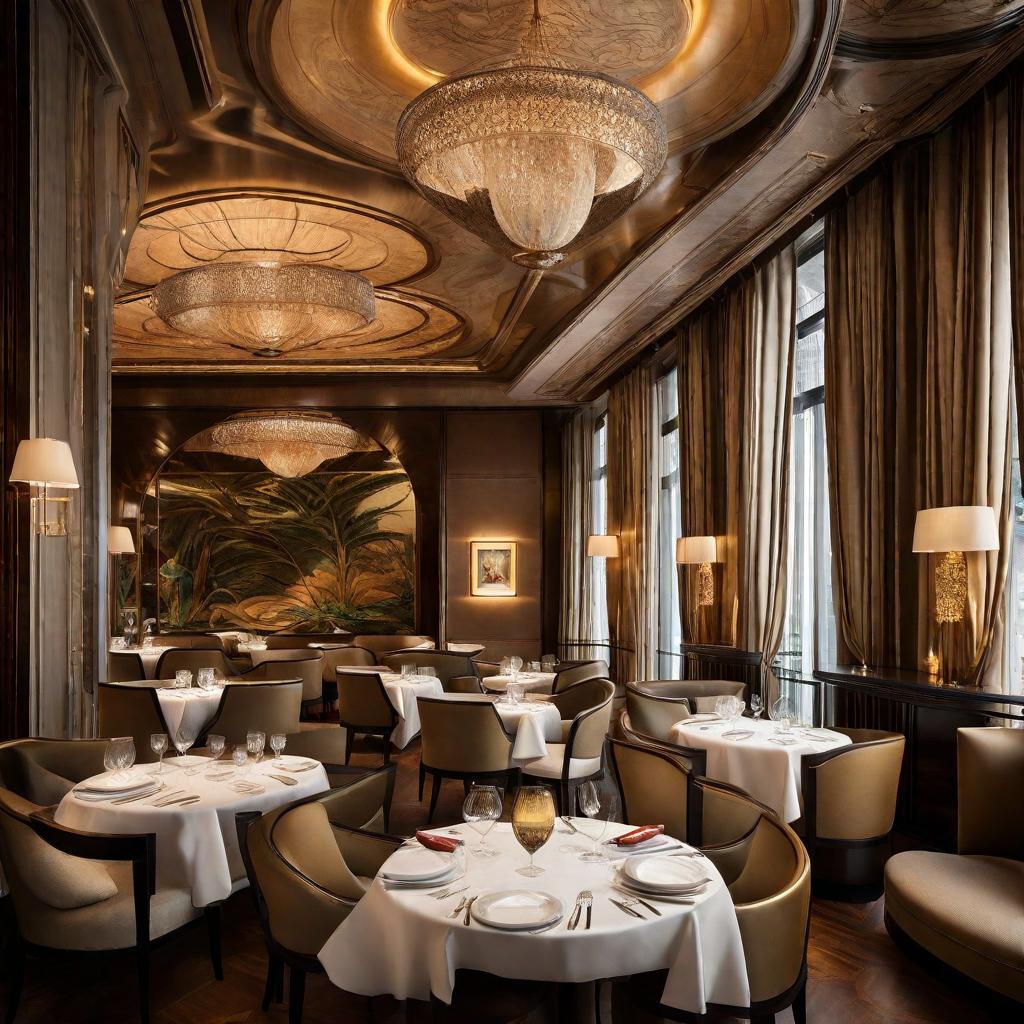
Top-rated dining experiences:
- Alain Ducasse au Plaza Athénée: This three-Michelin-starred restaurant offers contemporary French cuisine in a luxurious setting.
- Le Cinq: Located in the Four Seasons Hotel George V, this three-Michelin-starred restaurant serves classic French dishes with a modern twist.
- Guy Savoy: With three Michelin stars, Guy Savoy is known for its innovative cuisine and impeccable service.
- Arpège: Chef Alain Passard’s three-Michelin-starred restaurant focuses on fresh, seasonal ingredients, many of which come from his own garden.
- L’Astrance: This intimate restaurant holds three Michelin stars and is known for its inventive, Asian-inspired French cuisine.
Reservation tips and dress codes:
- Reservations at Michelin-starred restaurants in Paris are highly recommended and often need to be made well in advance, especially for popular establishments.
- It’s advisable to make reservations directly through the restaurant’s website or by calling. Some restaurants also accept reservations through online platforms like OpenTable.
- Dress codes vary depending on the restaurant, but in general, smart casual attire is appropriate. Avoid wearing overly casual clothing like shorts, flip-flops, or sportswear.
- It’s a good idea to arrive on time for your reservation, as many high-end restaurants have strict seating times.
Signature dishes to try:
- Alain Ducasse au Plaza Athénée: Signature dishes include the “Chartreuse of garden vegetables,” the “Blue lobster with citrus fruits,” and the “Chocolate soufflé.”
- Le Cinq: Try the “Quail stuffed with foie gras and truffle” or the “Scallops with caviar and leeks.”
- Guy Savoy: Signature dishes include the “Artichoke and black truffle soup with toasted mushroom brioche” and the “Colors of caviar.”
- Arpège: Don’t miss the “L’œuf à la coque,” a soft-boiled egg served with maple syrup and sherry vinegar.
- L’Astrance: Chef Pascal Barbot’s menu changes frequently, but signature dishes often include the “Foie gras and fig tartlet” and the “Roasted pigeon with licorice and spices.”
2. Street Markets and Food Trucks

Local flavors and affordable eats:
- Marché des Enfants Rouges: This historic covered market in the Marais district is the oldest market in Paris. Here you’ll find a diverse range of vendors selling everything from fresh produce and meats to international street food like Moroccan tagines, Japanese bento boxes, and Caribbean cuisine.
- Aligre Market: Located in the 12th arrondissement, Marché d’Aligre is a bustling market offering a mix of fresh produce, cheeses, meats, and affordable street food options. Be sure to visit the adjacent covered market, Marché Beauvau, for even more culinary delights.
Farmers’ markets and specialty vendors:
- Marché Raspail: Situated in the upscale 6th arrondissement, this organic market attracts locals seeking high-quality produce, cheeses, meats, and artisanal products. It’s a great place to sample organic treats and specialty items.
- Marché Bastille: Held near the Place de la Bastille, this sprawling market features a wide selection of fresh produce, seafood, cheeses, and specialty foods. You’ll also find vendors selling clothing, accessories, and crafts.
Food festivals and seasonal treats:
- Le Food Market: This monthly street food event brings together a diverse array of food trucks and vendors, offering everything from gourmet burgers and tacos to fusion cuisine and sweet treats. Check their schedule for upcoming events around the city.
- Fête de la Gastronomie: Held annually in September, this nationwide celebration of French gastronomy features food tastings, cooking demonstrations, and special events throughout Paris. It’s a great opportunity to sample regional specialties and seasonal treats.
3. Sweet Treats and Patisseries

Famous Bakeries and Patisseries:
- Pierre Hermé: Known as the “Picasso of Pastry,” Pierre Hermé’s macarons are legendary, and his innovative flavor combinations are a must-try.
- Ladurée: One of the most famous macaron shops in Paris, Ladurée offers a wide variety of flavors in a luxurious setting.
- Du Pain et des Idées: This bakery in the Canal Saint-Martin area is renowned for its traditional French bread and delicious pastries, especially the escargot pastries.
Macarons, Croissants, and Other Delicacies:
- Macarons: Aside from Ladurée and Pierre Hermé, consider exploring smaller patisseries like Pâtisserie des Rêves or Sadaharu Aoki for unique macaron flavors.
- Croissants: For the quintessential French croissant experience, head to Blé Sucré or Liberté for their buttery, flaky croissants.
- Other Delicacies: Don’t miss out on trying classic French pastries like éclairs, tarte au citron (lemon tart), and mille-feuille (Napoleon pastry) at patisseries like Carl Marletti or Stohrer, Paris’s oldest patisserie.
Dessert Tours and Cooking Classes:
- Paris by Mouth Dessert Tour: Join a guided tour with Paris by Mouth to discover the best sweet treats the city has to offer, from hidden patisseries to iconic bakeries.
- Cooking Classes: Several cooking schools in Paris offer pastry and dessert-making classes where you can learn to make macarons, croissants, and other French delicacies from expert pastry chefs. Consider schools like La Cuisine Paris or Le Cordon Bleu for hands-on culinary experiences.
Day Trips and Excursions from Paris
Palace of Versailles

Historic Gardens and Opulent Interiors:
- The Palace of Versailles boasts stunning gardens that cover over 800 hectares of land, featuring meticulously manicured lawns, ornate fountains, and beautiful sculptures.
- Visitors can explore the lavish interiors of the palace, including the Hall of Mirrors, the King’s Grand Apartments, and the Queen’s Apartments, which showcase exquisite craftsmanship and Baroque design.
Fountain Shows and Special Events:
- The palace hosts spectacular fountain shows during certain times of the year, where visitors can witness the water features in the gardens come to life in a choreographed display accompanied by music.
- Special events, such as concerts, exhibitions, and fireworks displays, are held throughout the year, offering visitors unique experiences within the palace grounds.
Transportation Options and Guided Tours:
- Visitors can reach the Palace of Versailles from Paris via various transportation options, including train, bus, or guided tours.
- Guided tours are available for those who wish to gain deeper insights into the history and significance of the palace. These tours often include skip-the-line access and knowledgeable guides who provide informative commentary during the visit.
Also Read : Best Places for Adventure Travelling in Antarctica
Summary:
Paris is a city filled with endless possibilities for exploration and discovery. From iconic landmarks like the Eiffel Tower and Louvre Museum to charming neighborhoods like Montmartre and Le Marais, there is something for every traveler to enjoy. Indulge in the culinary delights of Michelin-starred restaurants, street markets, and patisseries, or venture out on day trips to Versailles, Champagne Region, and Giverny. Don’t miss out on unique experiences like the Catacombs, Père Lachaise Cemetery, and Seine River Cruise for a truly unforgettable visit to the City of Light.
FAQs:
How many days should I spend in Paris to see all these places?
It is recommended to spend at least 5-7 days in Paris to explore the top attractions and experience the city’s culture and cuisine.
Are there budget-friendly options for dining and accommodations?
Yes, there are plenty of affordable dining options, street markets, and budget accommodations available in Paris to suit every traveler’s needs.
Is it necessary to book tickets in advance for attractions like the Eiffel Tower and Louvre Museum?
It is advisable to book tickets in advance for popular attractions to avoid long queues and ensure entry during peak tourist seasons.


